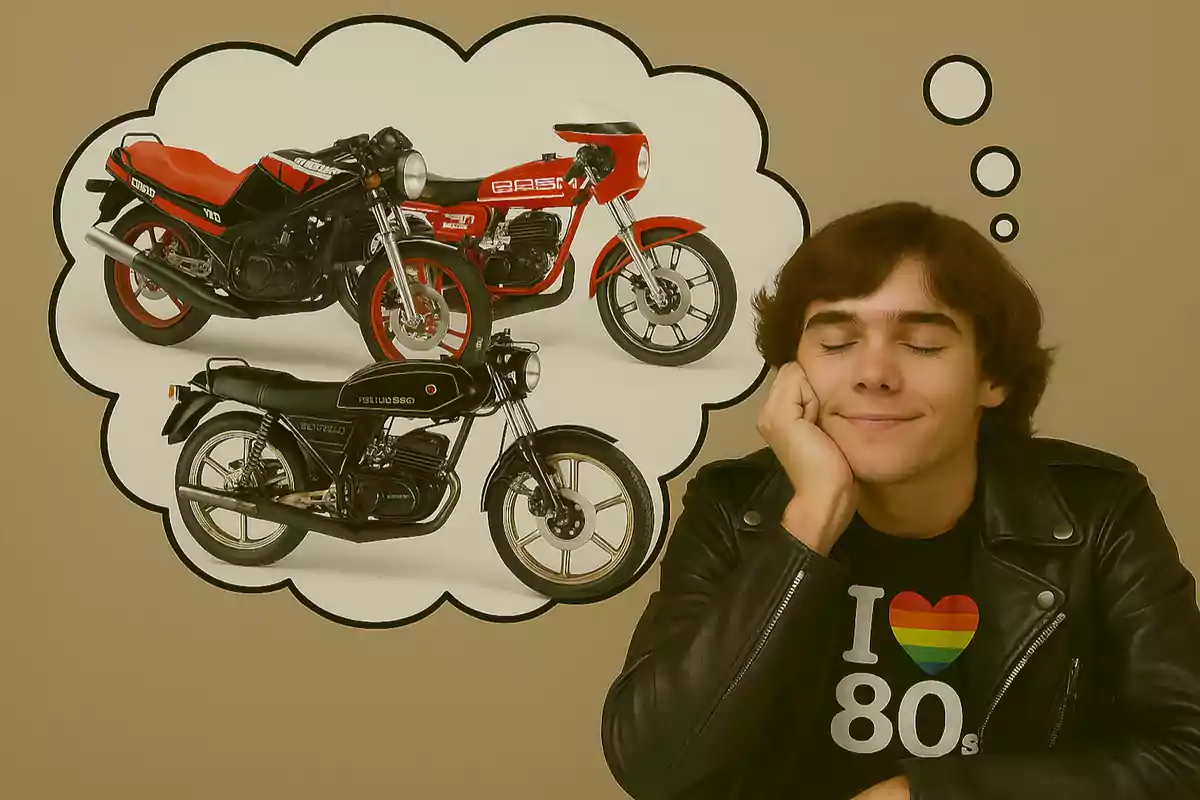
The motorcycles you dreamed of in high school: 10 iconic '80s models that kept you up at night
If you were born in the 1960s or early 1970s, you know exactly what this is about
If you were born in those years, you're around 50. It was in that decade of "la movida" when the motorcycle bug got deep into our souls.
Years of passion, of change, of a difficult transition for the Spanish industry and of an exciting discovery of what was coming from abroad.
It was the last swan song for our motorcycles, and at the same time, the welcome to a new world, filled with Japanese and Italian motorcycles and imported dreams.
Bultaco, Ossa, Sanglas and a few more were leaving us, and in their place, names like Honda, Yamaha, Suzuki, or Kawasaki started to arrive.
With them, our desire to have something more than a Cobra TT, at best.
We spent nights dreaming of an RD 350, an MBX, or some KTM we only saw in magazines.
Back then, we didn't know that today we'd be dreaming of those that left us then, and that there were still national gems that today would be museum pieces.
It was a change of era. The world was opening up, and so were our fantasies.
These are the ten legendary motorcycles from the 80s you dreamed of when you were in COU. Now, with a bit more luck (and money), maybe you can finally have one.
1. Bultaco Streaker
The Streaker was Bultaco's last great road roar. It wasn't a whisper, it was a sporty, fast, and precise shout.
Far above what the national market seemed able to offer in other segments at that time.
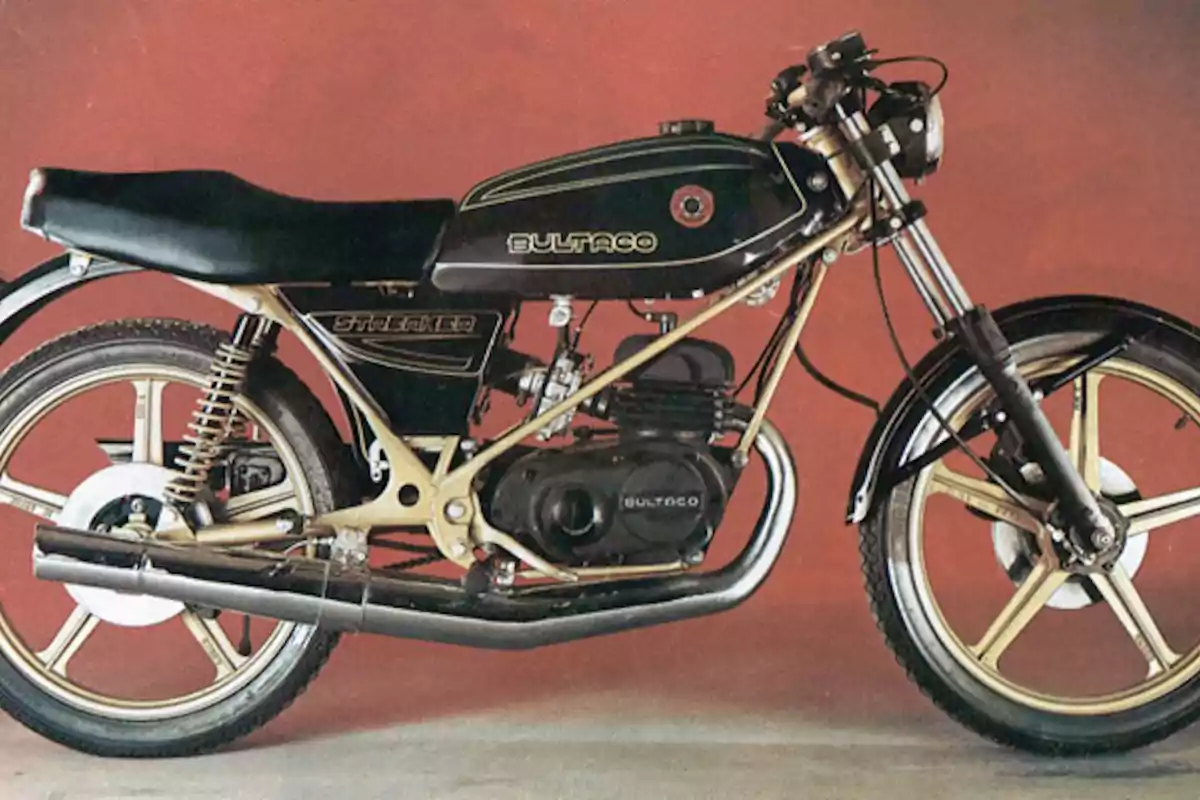
Lightweight, with a multi-tubular frame, disc brake, lively engine and a racing look that caught your eye.
It was the cradle of riders like Aspar, Sito, or Garriga, who began their careers in the legendary "Copa Streaker."
The black version, launched in 1977, had the brand's usual engine, but newly tuned. The white one, from '79, already featured a renewed clutch and new primary transmission.
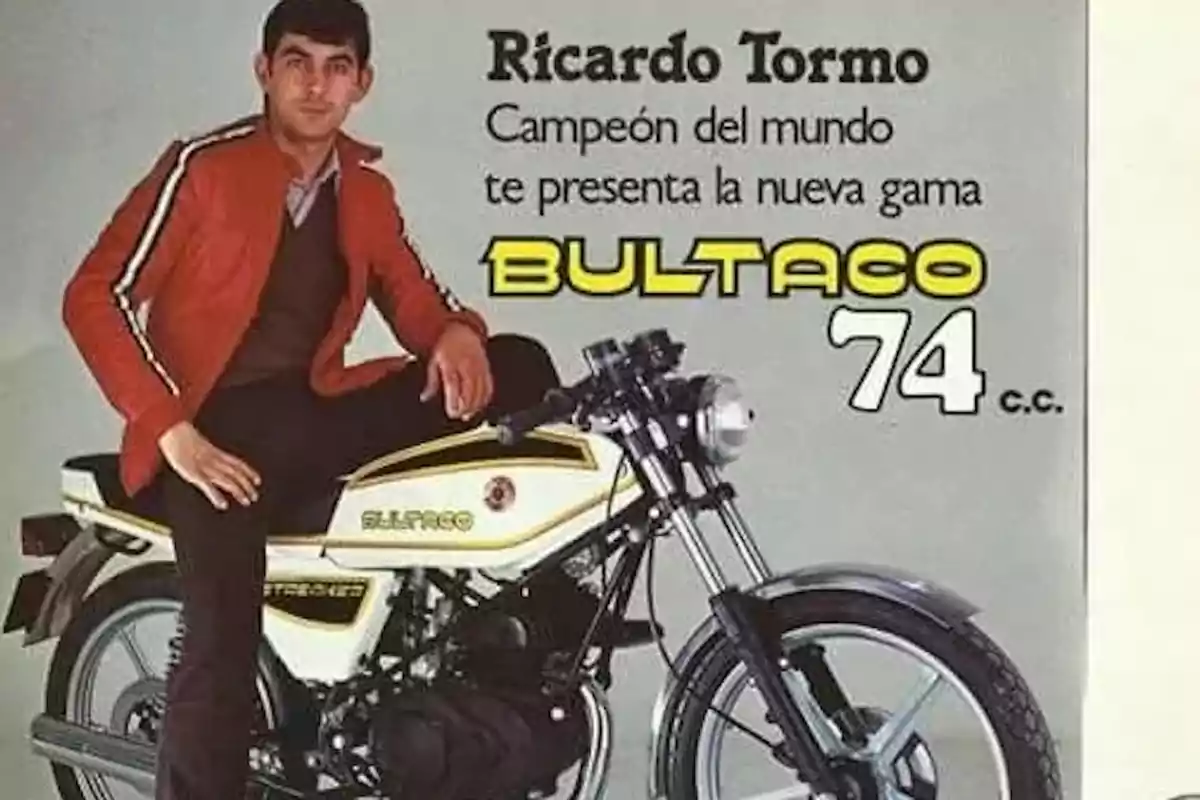
If Bultaco had survived... Can you imagine a Streaker with liquid cooling, rear linkage suspension, and a full fairing?
We'll never know. But we do know that today, owning one is almost a privilege.
2. Rieju MR 80
The MR 80 was Rieju's ultimate "rocket" in the 80s. It was born in the middle of the 75 cc enduro boom. That was when trails and tracks were the playground for an entire generation.
Puch led with its Cobra M-82, Montesa and Bultaco were already trailing, and Derbi held on as best they could. But Rieju... nailed it.
The original Marathon already had an Italian Minarelli engine, like the legendary Ancillotti models.
The MR 80 was its radical evolution. It offered a more serious frame, better brakes, an aggressive look, and an engine that nearly hit 27 hp (20 CV) in the competition version. One of the most powerful in its class.
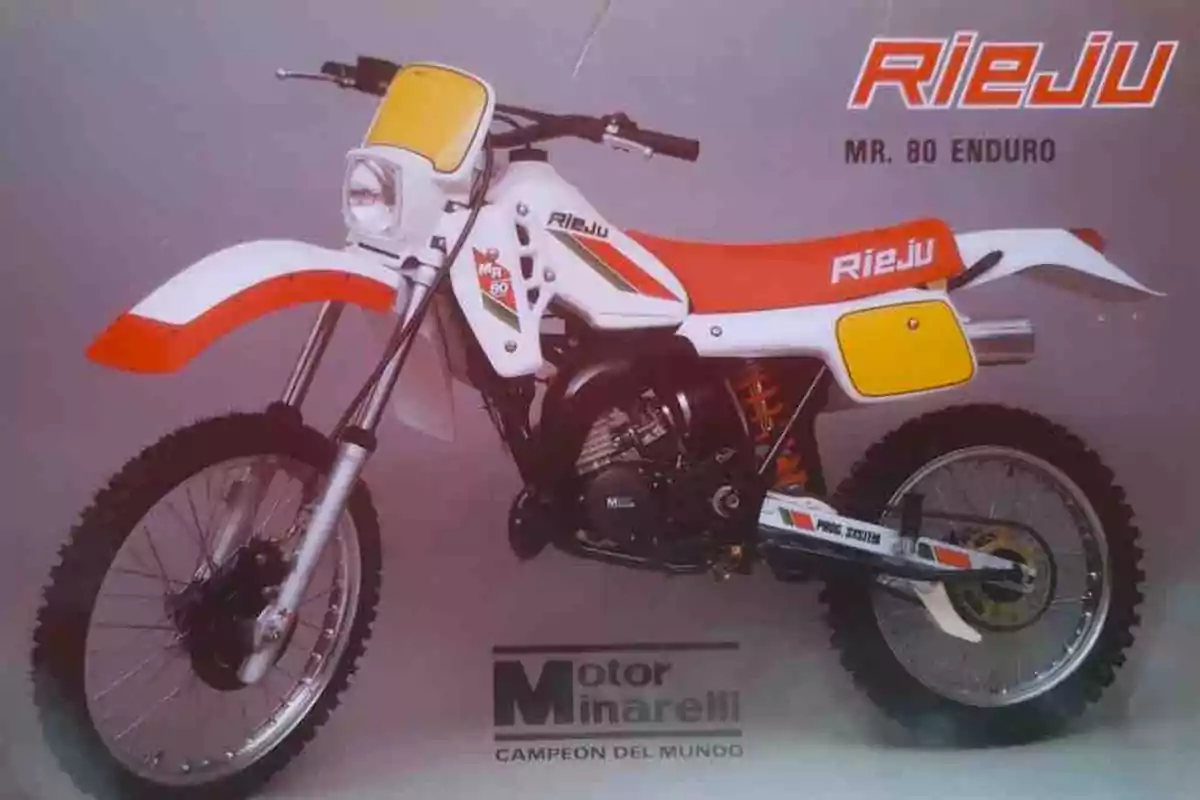
The white 1984 version looked like it came straight from a European Championship paddock.
Yes, the water-cooled Cobras were pushing hard, but the MR was two steps ahead.
It was the end of the national 75 cc enduros. But a glorious end, no doubt.
3. Honda MBX 75 "Hurricane"
When Honda truly entered Spain, the MBX was one of the first motorcycles that made us dream. It was one of those that made us forget those old brands.
It had a groundbreaking design, liquid cooling, Pro-Link system, front disc brake and Comstar wheels.
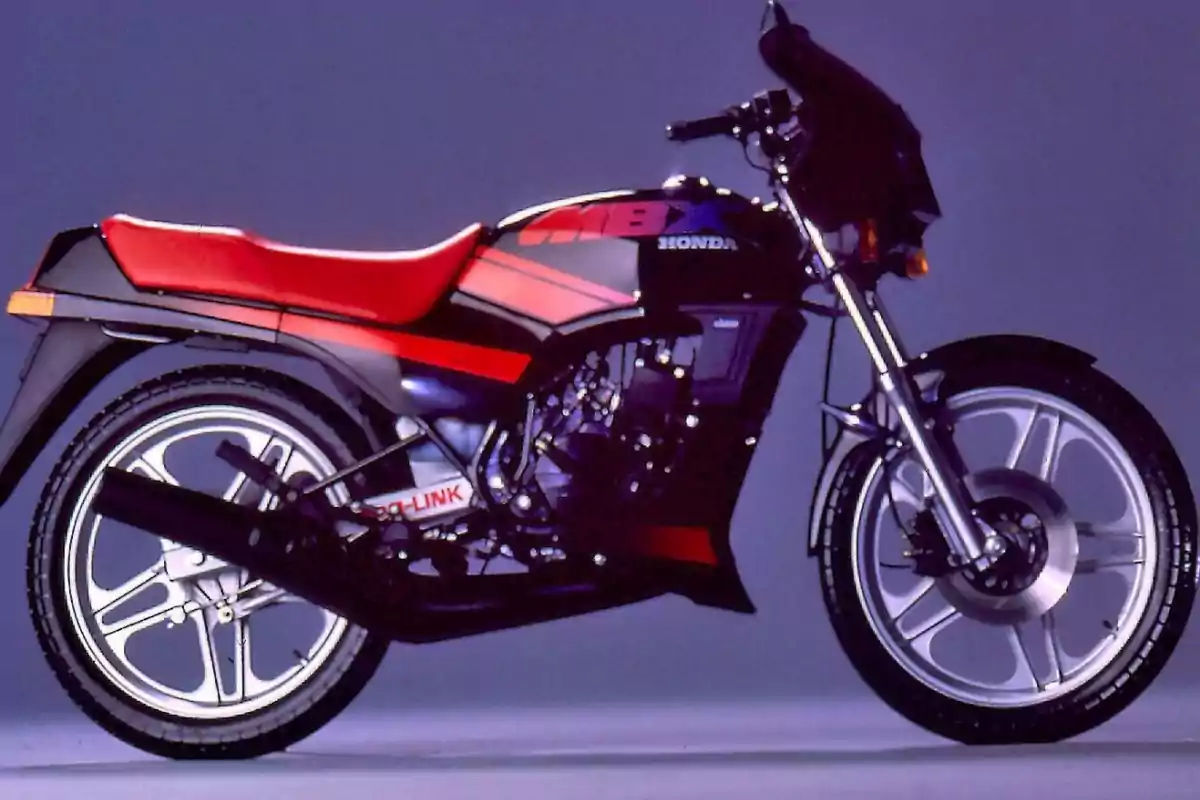
Most importantly: 16 hp (12 CV) and a look that made you feel like a racer and "modern" just by seeing it.
The "Hurri" came from another world. Crivillé even raced with it, and we would press our necks against the shop window to see it up close.

It was the start of a saga: the seed of the future NSRs, the natural rival of the TZR 80s, the GPRs, all those A1 rockets of the time.
Today it may seem modest, but in 1984 it was the missile we all wanted.
4. Yamaha RD 350
"The rich kid killer." That's what it was called in the 80s. Because it was expensive, only accessible to the wealthiest, who had better know what they were riding.
The RD 350 was everything an 18-year-old could desire. Equipped with parallel twin cylinders, liquid cooling, YPVS valves, 74 hp (55 CV) for less than 375 lbs. (170 kg).
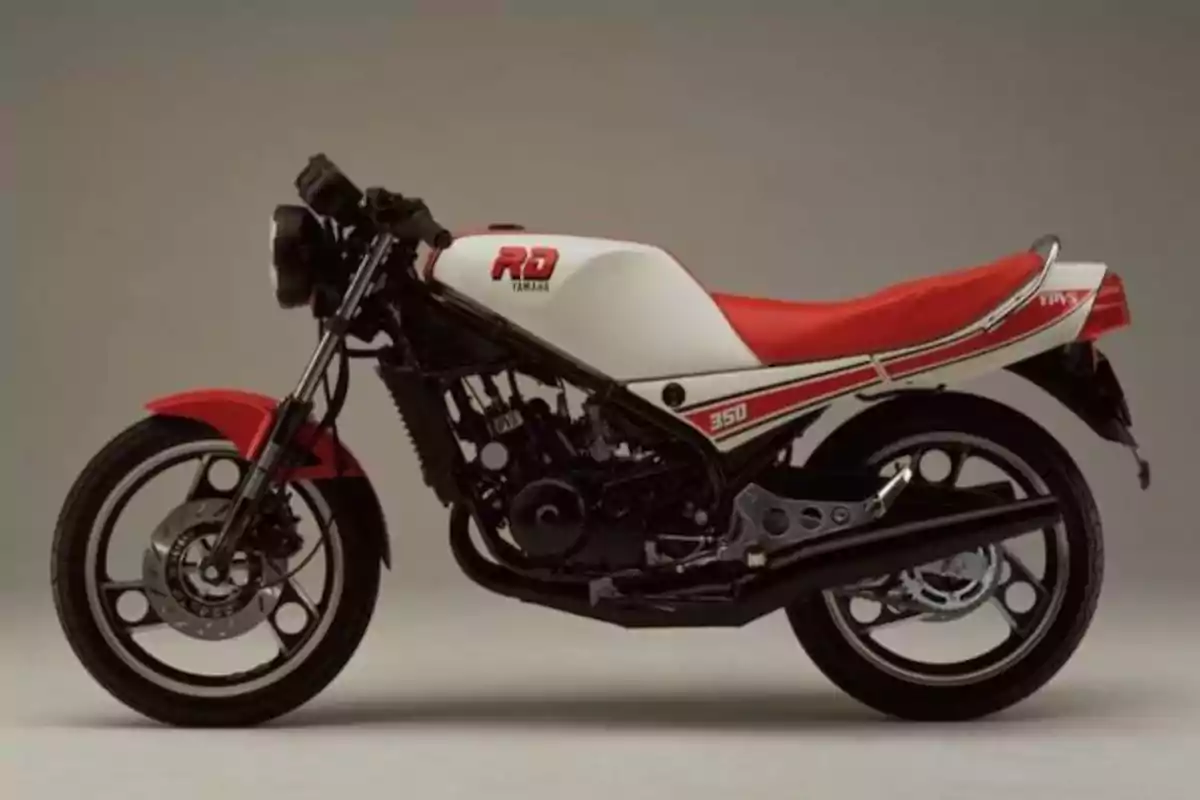
A mean streak that hooked you, with a frame that, being optimistic, we can call just adequate.
It wasn't an easy motorcycle, but it was addictive. Its name carried the promise of competition, since RD itself stood for Racing Development.
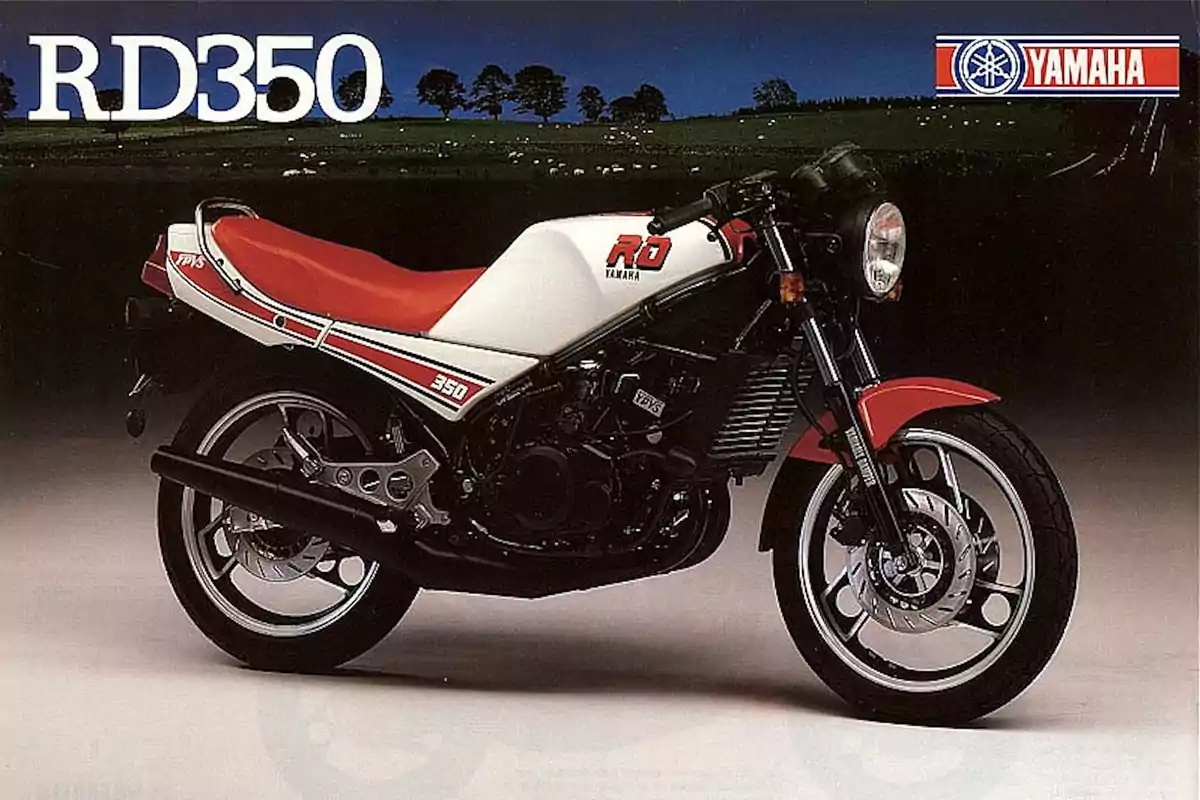
You'd rev it to the top and feel like the world was yours. But: if you braked hard, the triple clamp would flex and the frame would remind you that it wasn't all about power.
I raced one years later, in the RD Endurance Cup. I still remember that fast downhill corner in Cartagena.
I went straight into the tires. Even though I was more of a rocker than anything else, I guess I was too much of a rich kid for it.
5. Moto Guzzi 850 Le Mans
It wasn't the fastest, nor the most modern. But a Le Mans parked was a magnet for teenagers with acne and Italian dreams.
A classmate rode it to school (yes, without a license). I'd go down every recess to see it. Religiously.
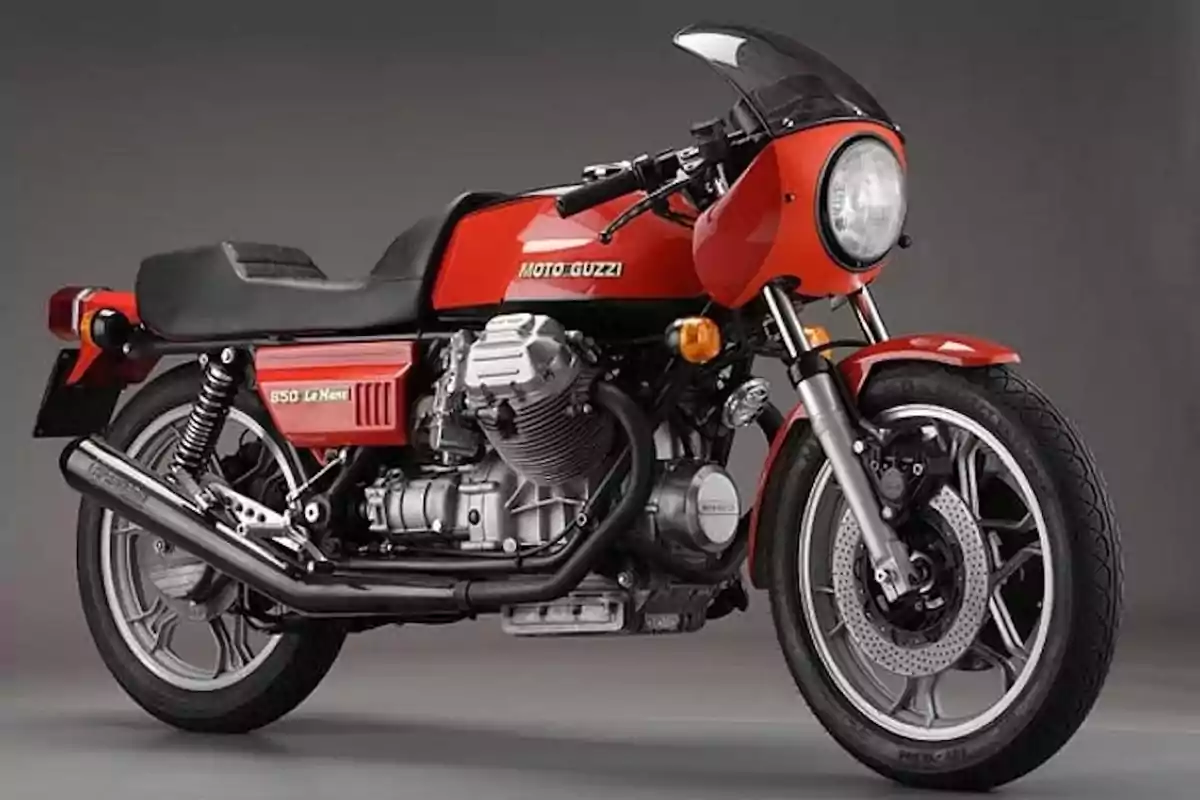
Transverse V2, cylinders sticking out of the fairing, 108 hp (81 CV), over 124 mph (200 km/h), and a look that, for many, is still unbeatable.
For me, the Le Mans II is the prettiest of all. The III, already in 1981, was the perfect end to that saga.
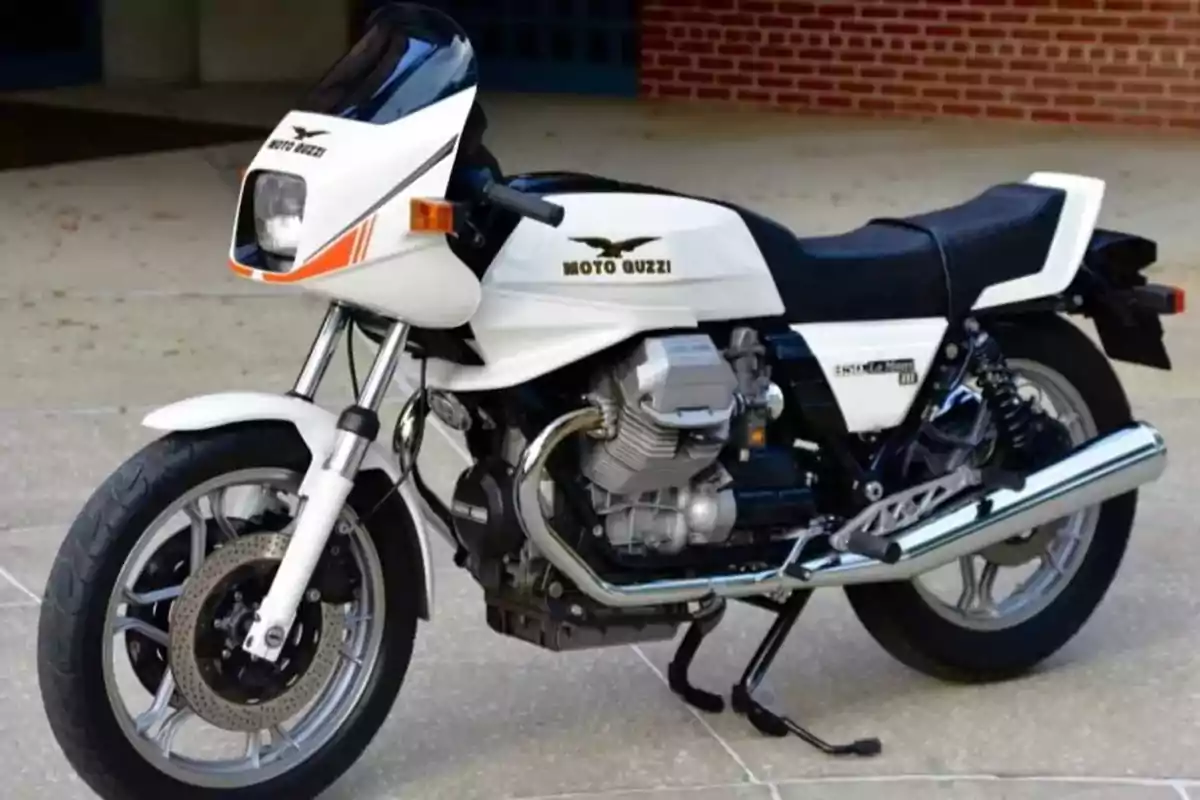
If you were more into Japanese bikes, maybe it didn't mean much to you, because it was already a bit of a "tank." But the Le Mans was still a thoroughbred sports bike that drew looks and dreams.
6. Ossa Copa F3
The Copa F3 was Ossa's last serious shot on the road. It was a well-aimed shot, aimed at the hearts of all those kids who wanted to race without going broke.
It started from the Copa 250 but went a step further. It benefited from a Phantom cylinder, special exhaust, fairing, clip-ons, tail section, rear-set footpegs, and above all,a lot of character.
It was sold as a kit to turn a regular Copa into an F3, and with that you could sign up for the Motociclismo Series and compete.
It had 45 hp (34 CV) for barely 243 lbs. (110 kg) and a racing look. Plus, an intoxicating sound and that castor oil smell that still makes us smile today.
7. BMW R 80 G/S
At the end of the 70s, BMW was about to shut down its motorcycle division. Suddenly, they came up with the G/S. More or less, that's how it happened.
They were inspired by the BMWs that some raced in the big class of the German enduro championship.
It was the last chance to save the motorcycle division, doomed by management due to poor results.
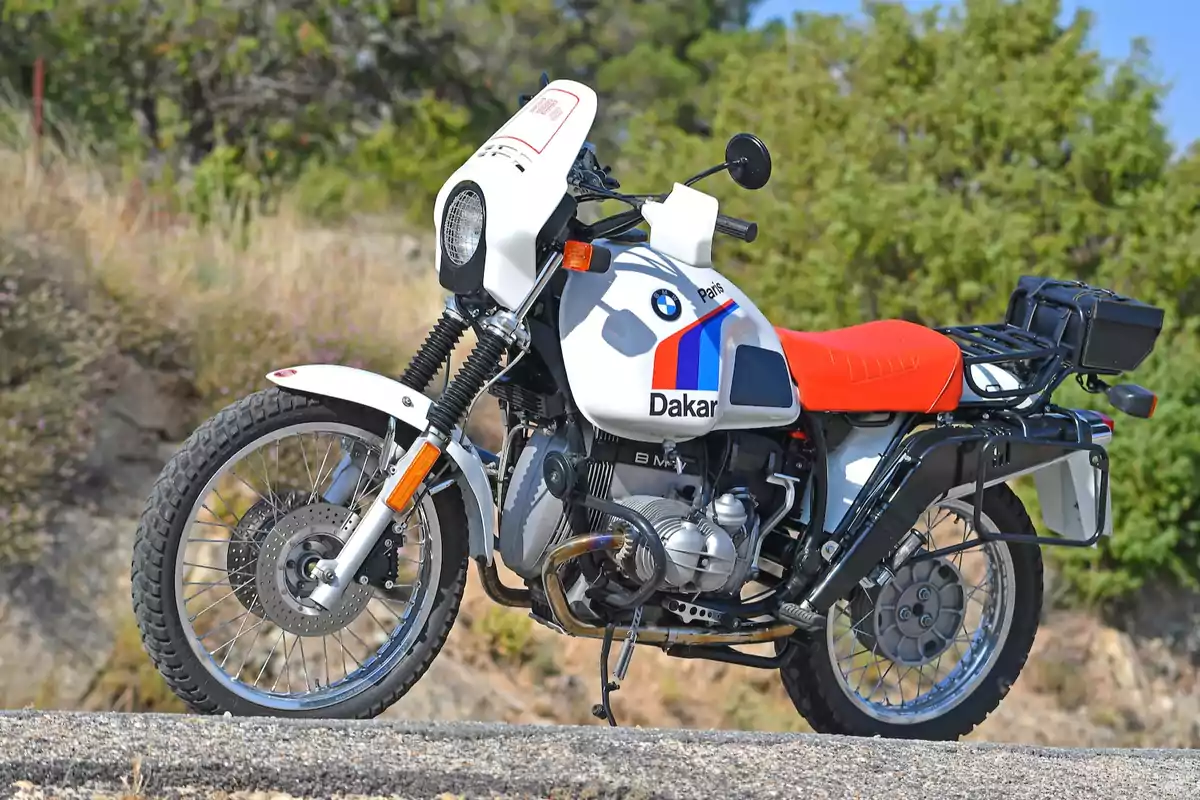
With parts taken from here and there, little more than what was in the warehouse from the previous R 80/7s, they created something new. The first real trail bike.
A motorcycle with a boxer engine, shaft drive, long suspension, and an adventurous spirit that was unlike anything else.
It rode comfortably on asphalt and could leave it with confidence.
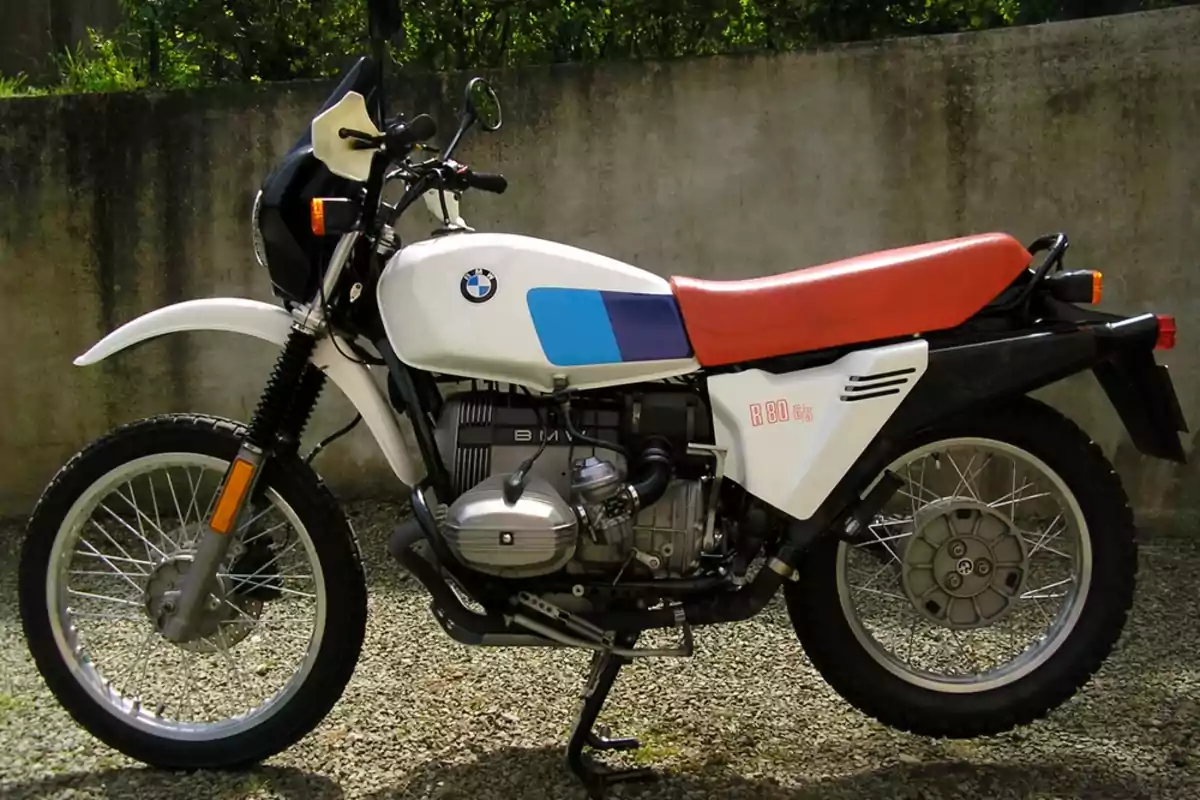
They unveiled it in Cologne in 1980 and it was a hit. To top it off, later they would win the Dakar in '81, '83, '84, and '85. With Auriol and Rahier flying over the sand at more than 112 mph (180 km/h).
The G/S was born as an "oddity." Big for an enduro, small and sparse for a GT.
But it was the starting point for a new type of motorcycle: the maxi-trail. So it remains today.
8. Gilera KZ 125
The Gilera KZ 125 was on many folders covered with motorcycle pictures. From it came an exciting saga of Italian 125 sports bikes.
It was derived from the RV 125, but it was another world. A very serious evolution. Full fairing, APTS valve, sharp design, frame-worthy colors, and 35 hp (26 CV) for just 273 lbs. (124 kg).
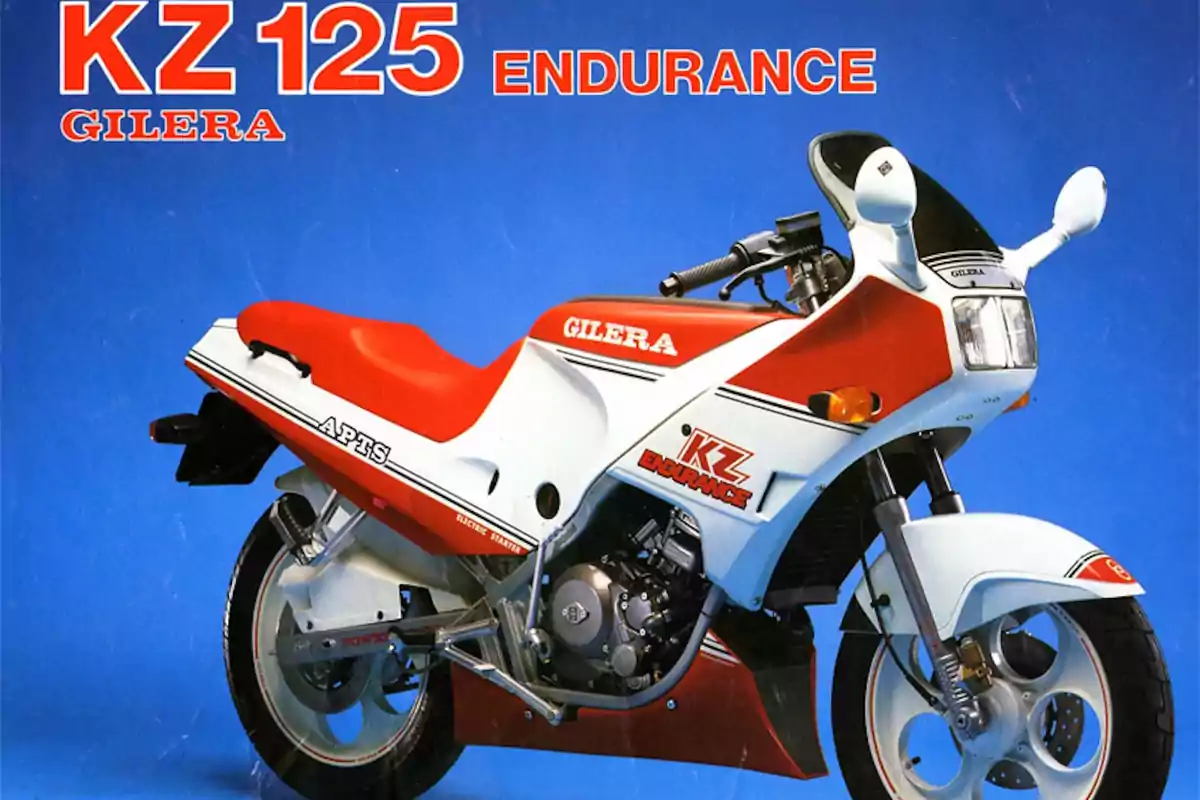
With it, a whole category was born. Without leaving Gilera, it's the predecessor of the now highly sought-after KK, MX1, MXR, SP01, and the beautiful last SP02 and Crono.
They all shared a soul, designed to make you dream of being a racer. To emulate the World Championship riders.
It was the origin of all those 125 2T bikes of the following decade. Motorcycles that gave us already legendary names like the Cagiva Freccia or the Aprilia RS.
9. Suzuki GSX-R 750
The GSX-R 750 wasn't just another motorcycle. There's a turning point it.
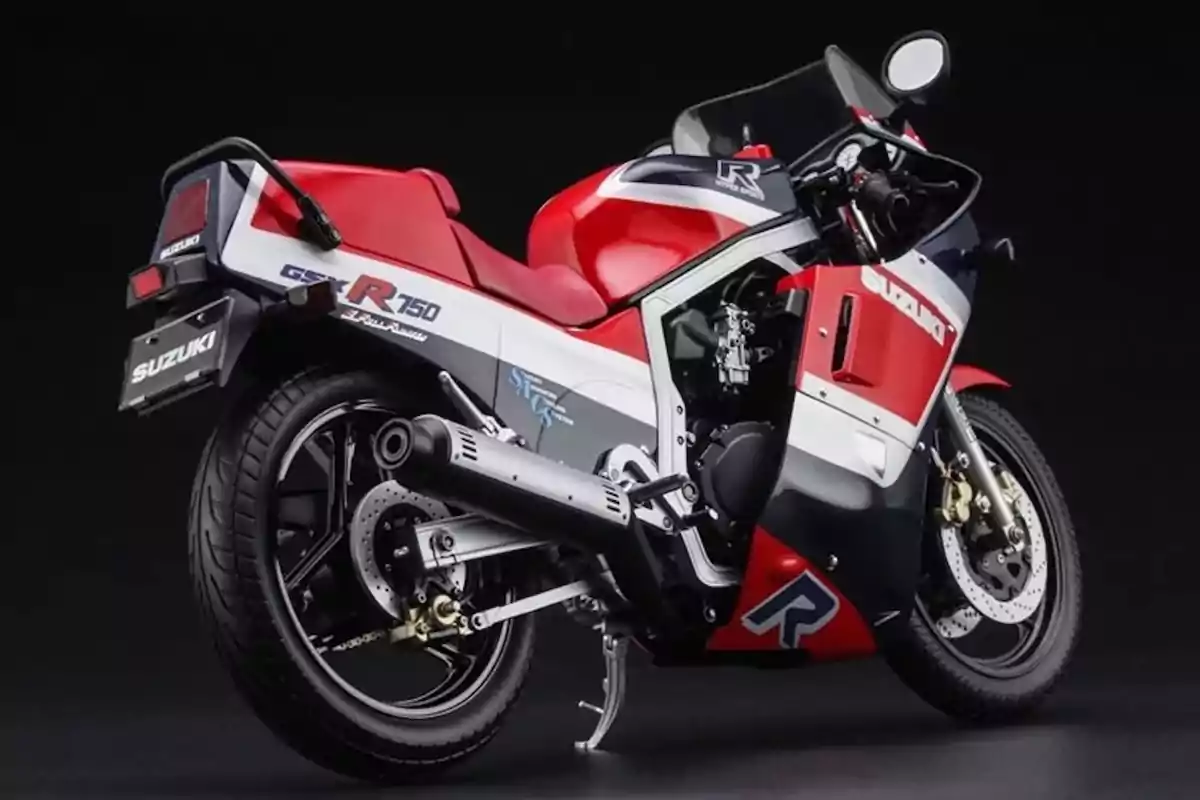
You can consider it the first true RR. It featured an aluminum frame, clip-ons, SACS engine, 142 hp (106 CV), and barely 388 lbs. (176 kg).
It was aggressive, light, radical. It was unlike anything before.
It was unveiled at the Cologne Show in 1984 and changed everything. From then on, the concept of a sports motorcycle was rewritten.

Then came the CBR, FZR, ZXR... but Suzuki undoubtedly laid the first stone.
10. Puch Cóndor
In a world where the MBX, GPR, and KZ were starting to reign, mopeds were still the real gateway. Puch knew it.
If you were turning 14 back then, it was your gateway too.

After the Monza and the Minicross, the Cóndor appeared as an off-road option for kids who wanted to ride in the dirt.
It was taller, longer, with a modern look and an improved frame. The engine was still the classic Puch. Tough, fun, and with a huge range of aftermarket kits to upgrade it.
It had room to evolve: over time, it adopted the monoshock or the front disc brake.
It coexisted for a while with the Minicross Super III, but soon established itself as the ultimate off-road moped.
More posts: